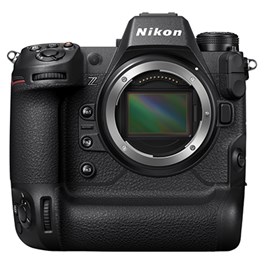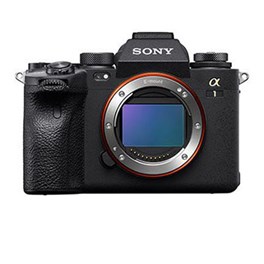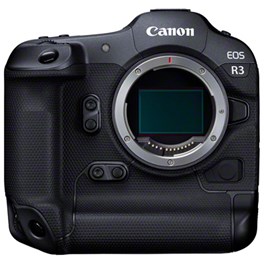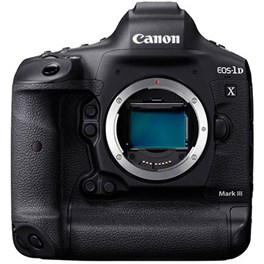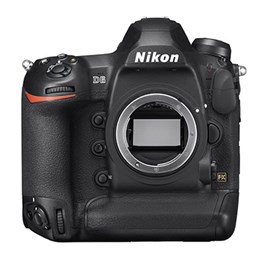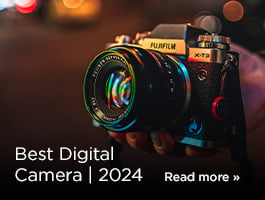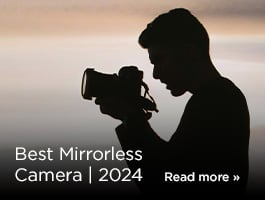
The best cameras for sports photography need to tick some quite specific boxes. Shooting sports is a tricky discipline, with very little margin for error, as it’s frowned upon to wander onto a pitch to ask a footballer if they wouldn’t mind doing that penalty again because you didn’t quite nail the focusing.
The demands on sports photographers are exacting – as such, camera manufacturers have risen to help meet them. Sports cameras tend to be the most sophisticated in any manufacturer’s stable, with top-of-the-line features and peerless image quality.
When shopping for a sports camera, there are a few particular features worth concentrating on:
Autofocus - Absolutely critical in sports photography, as the entire discipline is based around getting pin-sharp shots of fast-moving subjects doing unrepeatable things. Ideally you want a camera with on-sensor phase-detection autofocus, as this tends to be much faster than the older contrast-detection systems. Newer models also have features like subject tracking, face and eye detection, and even AI-powered subject recognition, which can lock onto humans in the frame, and even in some cases specific individuals.
Fast burst with a deep buffer - Being able to rattle off a good burst of frames in a few seconds increases your chances of nailing the shot. However, it’s also worth paying attention to a camera’s buffer, meaning how many consecutive shots it can take before it needs to cool off, as this will tell you how long your bursts can last.
Fast card compatibility - All those high-res bursts are going to crunch a lot of data, and you’ll need memory cards that can keep up. High-end cameras use CFExpress and XQD card slots, which offer very fast transfer speeds, but are more expensive than the standard SD. You can definitely use SD cards for sports shooting, but to be on the safe side, it helps if the camera can take advantage of the faster UHS-II class of SD card.
There’s more of course, but we’ll get into it as we go. We’ve listed a lot of top-flight cameras here – scroll to the last section if you’re on a tight budget, as we’ve listed a few cheaper options…
Best Mirrorless Camera for Sports Photography
Currently, the flagship sports cameras across practically every major camera brand are mirrorless cameras. Mirrorless is where, for want of a better term, the action is happening. Exciting developments over the past few years such as subject-detection autofocus have all been concentrated in mirrorless systems, and the last time we saw a sports-focused DSLR released was 2020. There’s no doubt about it – mirrorless is the future.
The cameras we’ve picked for this section are the current flagships for their manufacturers, and all of them deliver the best sports-shooting experience it’s possible to get right now. Thanks to their AI-powered autofocus systems and lightspeed burst rates, they are redefining what is possible in the field of sports photography. Of course, inevitably, all this wonderful tech does come at a price. If your sports-shooting aspirations are more modest, scroll further down the page where we also have a section of the best budget sports cameras to buy.
Nikon Z9 Digital Camera Body
Demonstrating Nikon’s mastery of photographic design, the Z9 is a true feat of engineering and intelligent ergonomics, with a stacked 45.7 MP full-frame CMOS sensor and ultra-fast EXPEED 7 processer to deliver astonishing image quality. Combined with Nikon's advanced AF system, the Z9 is built for speed, offering exceptional performance across both photography and videography applications.
£4,199.00 View
Pros:
- Exceptionally reliable tracking AF
- Lightning-fast burst modes
- Robust build and handling
Cons:
- Big and heavy
- Needs CFExpress or XQD cards
The Nikon Z9 is a masterpiece. You could call it a latecomer to the pro mirrorless party – but boy was it worth the wait. This is quite simply an exceptional mirrorless camera for sports, pairing a class-leading AI-powered autofocus system with some of the most blistering burst modes on the market. The Z9 can shoot at up to 20fps in full-res RAW, making the most of its 45.7MP sensor. Switch to JPEG, still full-res, and you can get 30fps. Drop the resolution to 11MP, and you get a whopping 120fps. You also get a blackout-free viewfinder experience while shooting at these dizzying speeds.
The AI-powered subject-detection autofocus system is freakishly good, showing an uncanny ability to grab the subject you want and hold onto it even as it moves. The ergonomics of the Z9 are also outstanding – with an integrated vertical grip, it’s one of the first mirrorless cameras that really feels like a replacement for a professional DSLR.
Sony A1 Digital Camera Body
Introducing the Sony A1 Digital Camera Body. This incredible new high-resolution 50.1MP model from Sony offers 30fps blackout-free shooting with AF that is double the speed of the a9 II. For video shooters, 8K 30P 10-bit 4:2:0 is available with up to 30 minutes of shooting before over-heating. For those more interested in 4K, you can shoot 120P at 10-bit 4:2:2 internally. In addition, this camera also features a wide 15 stops of dynamic for stills & 15+ stops for video. We also see the World's first EVF with 240fps, strong and stable IBIS, and a vastly improved AI-based real-time tracking performance. This is Sony's advanced and innovative camera yet and is guaranteed to send shock waves through the mirrorlesss-video market.
£4,299.00 View
Pros:
- Excellent high-resolution image quality
- Very fast autofocus
- Burst mode delivers the goods
Cons:
- Fiddly menu system
- Smaller, lower-res rear screen than rivals
A big, beefy mirrorless camera that’s good at everything, the Sony A1 is a true tool for professionals. Sports shooters will have a field day with its 759 phase-detection autofocus points and 30fps burst mode, aided by subject-recognition technology that can lock onto humans with unerring accuracy. It’s capable of doing up to 120 AF calculations per second.
The vibration-free electronic shutter operates smoothly and silently, with the high-speed readout of the Exmor RS CMOS image sensor reducing rolling shutter by up to 1.5 times compared to Sony’s previous sports shooter, the Sony A9 II. It also boasts a big beautiful electronic viewfinder with a refresh rate of 240fps – though the LCD screen is a little small and low-res compared to its big-boy mirrorless rivals. And we haven’t even mentioned image quality, which is superb. The Sony A1 really makes the most of that lovely 50.1MP full-frame Exmor RS CMOS image sensor, delivering top-notch images in all conditions.
Canon EOS R3 Digital Camera Body
The Canon R3 is the pinnacle of photographic engineering, boasting an incredible range of features and functions. This camera is designed to seamlessly fit into your existing Canon EOS R ecosystem with a familiar layout and robust, weather-sealed body. It’s a powerhouse of technology and will revolutionise the way you capture high-speed action, wildlife, sports photography and video footage.
£4,699.00 inc. Cashback View
Pros:
- Eye Control AF
- Superb blackout-free viewfinder
- Robust handling with deep grip
Cons:
- Lower resolution than rivals
- Big and hefty
Canon’s flagship sportster hews a little closer to the traditional format than others, with a lower-resolution sensor than either the Nikon Z9 or the Sony A1. But let’s not overstate things – 24MP is still plenty enough for most sports photography purposes, and it does confer a few advantages of its own, with the EOS R3 creating less noise in images than its higher-res rivals.
With a 1/64,000sec top speed on the electronic shutter, the EOS R3 is capable of freezing anything that moves in pin-sharp detail. Its Dual Pixel CMOS AF II is class-leading, with intelligent tracking that’s able to recognise specific subjects, and viewfinder Eye Control that really works.
Having a blackout-free electronic viewfinder with 5,760,000 dots of resolution makes composing with the EOS R3 a sublime experience. It’s also well constructed, with satisfying handling that’s reminiscent of a good old-fashioned sports DSLR.
Best DSLR Camera for Sports Photography
DSLRs used to be the kings of sports photography. Once, if you’d looked in the photography pit by a football pitch or a racetrack, you simply wouldn’t have seen any other type of camera. Time marches on of course, and things change, and these days you’re much more likely to see an abundance of mirrorless models. But that’s not to say the DSLR still doesn’t have its place – there are still a fair few photographers out there who prefer the format for its rugged handling, optical viewfinder and big battery life.
The long reign of the DSLR also means that you have a lot of lenses to choose from, as the ranges have built up over the years. We’ve selected the standout sports DSLRs from the two great standard-bearers of the format – Canon and Nikon – and either one will serve you brilliantly for sports shooting.
Canon EOS-1D X Mark III Digital SLR Camera Body
£300 trade-in bonus
The Canon EOS-1D X Mark III offers huge upgrades to the MKII including 5.5K RAW video recording, Deep-Learning AF, and an ISO range of 100-102,400. Whatever the situation, whatever the lighting, EOS-1D X Mark III will deliver exceptional images - beating the competition to the punch with its exceptional speed. The camera body is tough, reliable and intuitive. Ideal for sports, wildlife and documentary shoots, this high-performance camera forms the creative toolkit you need to capture the unrepeatable moments with.
£6,999.00 View
Pros:
- Best autofocus on a DSLR
- Respectable burst modes
- Battery lasts well
Cons:
- Lower resolution than rivals
- No image stabilisation
One of the last great DSLRs, the Canon EOS-1D X Mark III was in many ways a preview of what was to come. It was released in 2020, but came sporting a new feature that would soon become all the rage – AI-powered subject-detection autofocus. While it’s not as sophisticated as the systems that would appear in later cameras, it’s still excellent, and it’s hard to imagine many sports photographers being too dissatisfied with it.
The EOS-1D X Mark III shoots at a respectable clip of 20fps in Live View mode – again, not as fast as the flagship cameras of today, but still realistically fast enough for most purposes. Where you might find it wanting is in resolution. Back in the day it was generally accepted that sports cameras would boast fewer pixels in order to achieve their dizzying shooting speeds. This isn’t really the case any more, and accordingly, the EOS-1D X Mark III’s 20.1MP sensor does look a bit meagre by modern standards.
Nikon D6 Digital SLR Camera Body
The newly designed Nikon D6 Digital SLR Camera Body builds off the huge success of its predecessor, the Nikon D5. The flagship D6 body features Nikon's most advanced autofocus system yet. using 105 all-selectable cross-type sensors with a 1.6x higher density coverage than the D5. The AF system that is used allows for extremely quick and accurate subject acquisition in a variety of shooting modes, including a solid performance even when shooting at 14fps. The imaging structure is built up of a large 20.8 megapixel CMOS sensor and a fast EXPEED 6 Image Processor. Thanks to this, the camera is able to perform incredibly well in adverse light conditions with an ISO range from 100-102400 (ext. 50-3280000). This camera has been built with professional photographers in mind and will meet the demands of any photoshoot.
£6,799.00 View
Pros:
- Huge range of F-mount lenses
- Reliable workhorse AF system
- Extremely solid build
Cons:
- Live View autofocus is contrast-detect only
- 1D X Mark III has smarter, better autofocus
The Nikon D6 also represents the end of an era, being almost certainly the last pro-spec F-mount DSLR we’re going to see. Happily, it’s an absolute beast for sports shooting, with a 14fps burst mode that just goes and goes, and a thoroughly reliable autofocus system with impressive tracking. This may not sound that impressive compared to the mirrorless monsters in our first section, but let’s not lose perspective – it is more than enough to get the job done in most sporting situations.
The enormous F-mount lens range will give you a huge range of options when building your sports-shooting setup, even given the fact that we aren't likely to see many new ones coming in the future. One thing to note is that the Nikon D6 uses phase-detection autofocus, but only when you’re shooting with the viewfinder. Attempt to use Live View and you’ll be forced to rely on a much less capable contrast-detect system, which also somewhat compromises the Nikon D6 as a tool for video.
Best Medium Format Camera for Sports Photography
We know what you’re thinking – medium format for sports?! Indeed, these big, ponderous cameras with extra-large sensors may not seem a natural fit for the agile world of sports photography. The big files they create slow down processing speeds, making it tricky to get much of a burst mode going, and the larger sensor means that the effective focal length of a lens is actually wider than its stated focal length, making it harder to get real telephoto reach.
However, advancements by Fujifilm and Hasselblad in recent years have done much to improve the speed and versatility of medium format, and modern mirrorless medium format cameras are a credible option for sport photography. Indeed, in an interview with Phototrend earlier this year, Fujifilm managers hinted that they are looking to develop a sports-oriented medium format GFX model in the future.
Pros:
- Sublime image quality
- Phase-detection autofocus
- Good choice of system to invest in
Cons:
- AF tracking lags behind peers
- Quite bulky and heavy
The Fujifilm GFX 100S is an ideal choice for getting sports images with that medium format ‘look’. Thanks to on-sensor phase-detection autofocus, it does a much better job of keeping up with fast-moving action than many of its medium format rivals. The tracking isn’t as reliable as that of sports-focused full-frame models, but it still does a commendable job.
The GFX 100S produces gorgeous images right the way through its ISO range, so you don’t have to worry when the light gets low. Also, as mentioned in the intro to this section, the fact that Fujifilm has hinted (though we stress, only hinted) at a future sports-focused medium format camera makes this potentially the best system to start investing in, as you can start building up a collection of quality lenses. Bear in mind that while GFX cameras and lenses are lighter than many other medium format options, they’re still pretty heavy, and you’ll struggle to use them hand-held for long periods.
Pros:
- Gorgeous, stunning image quality with huge dynamic range
- 1TB built-in SSD storage
- Phase-detection autofocus
Cons:
- No video at all
- Quite basic autofocus (no eye or face tracking)
You won’t find many sports photographers listing Hasselblad as their system of choice. However, the Hasselblad X2D 100C makes a much better case for itself than previous models thanks to the inclusion of phase-detection autofocus, rather than relying on a contrast-detection system. It’s still not exactly a speedster, and the lack of face and eye detection is a pain especially when you consider the fact that Fujifilm managed to include these features in its GFX cameras.
However, if you want that sublime Hasselblad look for your sports photography, there’s no other way to get it, and images shot on the Hasselblad X2D 100C look absolutely divine. The dynamic range on this thing is simply stunning, giving you 15 stops to play with, as well as 16-bit colour depth in RAW format. Having built-in SSD storage of 1TB is also very handy for sports shooting, where you tend to be firing off a lot of frames.
Best Budget Camera for Sports Photography
We’ve dealt with a lot of high-ticket attractions in this guide. Sports cameras tend to be designed for professionals, after all, and as such they are often a company’s flagship models, crammed with all the latest and greatest features. However, sports photography doesn’t need to be solely the province of the professional and the well-heeled, and it’s entirely possible you’re just looking for a good camera to capture the action at your local five-a-side, or down at the skatepark. Or you’re looking for a cheaper camera to learn the basics on before graduating to something more advanced.
If so, this section is for you, as we’ve picked out the best budget cameras for sports photography. We’ve kept it to interchangeable-lens cameras to give you greater flexibility, but have gone for options that are a few years old as well as some newer picks – there are always serious savings to be had if you don’t mind a camera from a few generations ago.
Pros:
- Very lightweight and portable
- Autofocus system impresses
- Lots of lenses available
Cons:
- A6400 is better if your budget stretches
- Charging port is Micro USB not USB-C
Sony’s nippy APS-C A6XXX series have a reputation for being excellent speedsters in terms of autofocus and burst. The A6100 strikes a terrific balance between performance and price, with Fast Hybrid AF and real-time tracking that’s paired with 11fps burst capture. With arrays of 425 phase-detection points and 425 contrast-detection points, you’re comprehensively covered right the way across the frame.
The A6100’s 24.2MP sensor delivers great-quality images, and having Sony’s E-mount gives you absolutely tons of sporty lenses to choose from, both Sony-made and third-party. It’s nice and light too, weighing just 396g body-only. If your budget can go a little further, the A6400 has better autofocus and a more solid build, but the Sony A6100 does terrifically well for a camera at its price point. We wish the charging port was USB-C rather than Micro USB; not only is the connection faster, but the port tends to be more robust. Otherwise, we have few nits to pick here.
Canon EOS R10 Digital Camera with 18-45mm Lens
As an entry-level bundle, the Canon EOS R10 with 18-45mm Lens is the perfect next step in your photography career. Whether you’re moving on from a smartphone or upgrading your DSLR, the EOS R10 provides more room for creativity with features like 23/30fps bursts, a Dual Pixel CMOS autofocus II system, 4K Video Recording, a powerful DIGIC X Processor and more – the only limit is your imagination.
£999.00 View
Pros:
- Dual Pixel CMOS AF II with subject tracking
- Supports UHS-II class SD cards
- Very lightweight build
Cons:
- Not weather-sealed
- No in-body stabilisation
Canon has released plenty of budget-friendly, beginner-friendly cameras for its EOS R range, and the reasonably priced EOS R10 hits a lot of key considerations for sports photographers. It’s nippy, with a sophisticated AF system that benefits from modern developments like subject-tracking. Indeed, this is the same Dual Pixel CMOS AF II system that has been seen in cameras like the EOS R5, EOS R6, and yes, even the flagship EOS R3. Who said only the pros get the good stuff?
The silent electronic shutter can shoot at up to 23fps, and the 24.2MP APS-C sensor delivers crisp, high-quality images. The EOS R lens range is coming on apace, with a fair few lightweight optics that’ll suit this slender camera. Just be aware that it’s not weather-sealed, so you’ll need to be careful in the wet. Also, the EOS R10 doesn’t have built-in stabilisation, so you’ll need to either rely on lens-based IS or just watch your shutter speeds, especially when using longer telephotos.
Pros:
- SLR-style handling with weather seals
- MFT crop factor extends telephoto reach
- Effective in-body stabilisation
Cons:
- Slower contrast-detect autofocus
- Only 6fps with continuous AF
The Panasonic Lumix G80 is an older model in the range, but is still quite effective as a budget-friendly sports camera. The smaller Micro Four Thirds sensor means it has an effective crop factor of 2x – which is actually quite handy in sports photography, as it doubles the effective reach of a lens. So, a 50mm lens mounted to the G80 will behave like a 100mm lens, getting you much closer to the action.
The G80 relies on a fairly fated contrast-detect autofocus system, and when focus is engaged its burst mode tops out at 6fps. This means you won’t get the same hit rate as you would with a high-end sports camera – but then again, you’ll also have saved around £5,000, which should provide some consolation. Having in-body stabilisation is nice for ensuring shots stay sharp, and the handling of the G80 is also top-notch, with an SLR-style grip that’s comfortable to use for long periods. It’s weather-sealed too, meaning rain need not stop play.

FAQs
What is the best camera for sports photography?
The best camera for sports photography depends on various factors such as budget, specific sports requirements, and personal preferences. However, it's crucial to consider factors like burst rate, autofocus performance, and low-light capabilities when choosing a camera for sports photography.
What is the ideal lens for sports photography?
The ideal lens for sports photography also depends on several factors like the type of sport, shooting distance, and lighting conditions. Sports photographers typically opt for telephoto lenses with fast autofocus and wide apertures.
How do I capture action shots in sports photography?
To capture action shots in sports photography, you need to consider a few key techniques including the use of a fast shutter speed, pre-focus, anticipating the action and shooting in burst mode.
How can I improve low-light performance in sports photography?
To improve low-light performance in sports photography, you should use a camera with good high ISO performance and use a wide aperture lens (e.g. f2.8 or wider). You can also experiment using external lighting such as flash or strobes if allowed in the sports event.
What are the advantages of shooting in burst mode for sports photography?
Put simply, shooting in burst mode increases the chance of capturing the perfect moment in action-packed scenes. Additionally, it allows you to choose from a series of images with slightly different compositions or expressions.
What are some essential accessories for sports photography?
There are several accessories we would suggest but most importantly, a telephoto lens for capturing distant subjects, extra camera batteries and memory cards, a tripod or monopod and a rain cover!
How do we decide?
Our in-house photography experts, store staff and partners all work collaboratively to pour over our guides and tips articles. We also consider emerging trends and customer feedback to make sure our guides are always up-to-date and reflective of what people are truly looking for. By curating only the best products, our guides provide trustworthy recommendations, making it easier for customers to make informed choices with confidence.
If you would like more advice on any purchase our contact centre staff are here to help. Alternatively, you can reach us via email or social media. And don't forget. If you were to purchase anything based on our recommendations you'll be covered by our full returns policy
Sign up for our newsletter today!
- Subscribe for exclusive discounts and special offers
- Receive our monthly content roundups
- Get the latest news and know-how from our experts

